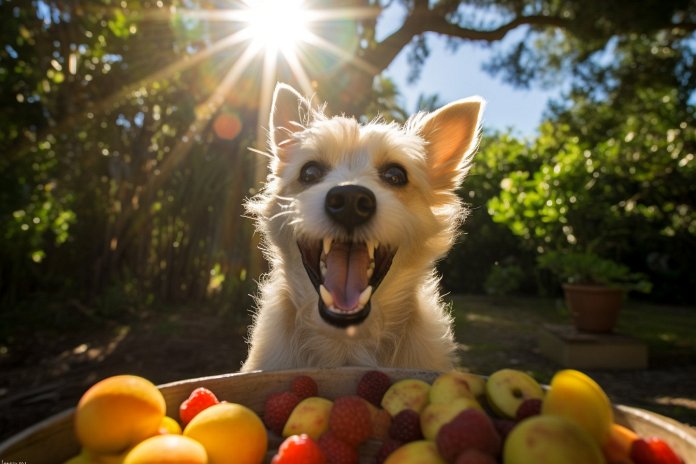
Sweet foods are delicious and most people have a sweet tooth, including dogs. While dogs have a good sense of taste, humans can taste better than dogs. Dogs are able to taste sweet foods and often prefer them over other tastes. This explains why dogs may eat bags of cookies left out.
Signs of a Dog Liking Sweet Foods
There are key signs to determine if your dog likes sweet foods. If your dog chooses an apple over a piece of cheese, they likely have a sweet tooth. Dogs may also show excitement for sweet foods by drooling, staring, pawing, barking, or crying for treats. If your dog gets into sweet foods like chocolate or fruits left within reach, they definitely love sweets and you should be cautious about where you leave them.
Body Language
Signs that your dog likes sweet food include staring, being alert, wagging their tail, lip licking, drooling, and having their tail up.
Other Signs
Some other signs that your dog likes sweet food include raiding cupboards for sweets, choosing sweet over savory treats, and gobbling down any sweet treat.
History of Dogs’ Ability to Taste
Taste and smell are the oldest and most important senses for dogs. These senses help dogs determine what is safe to eat. Over time, dogs’ sense of taste became more sophisticated and they began to eat for enjoyment. Dogs developed a taste for sweet foods as they ate small amounts of fruit and were given sweet foods by their owners.
Science Behind Dogs Tasting Sweet
Dogs have fewer taste buds than humans and their ability to taste is not as advanced. Dogs can taste sweet foods due to a chemical called furaneol. However, dogs still prefer the taste of meat, which makes up a large part of their diet.
Training for Dogs Who Like Sweet Food Too Much
If your dog has a serious sweet tooth and tends to seek out sweet foods, it can become a problem. Too much sugar is bad for their health and this behavior is destructive. To address this, remove sweets from their reach when you leave them alone and consider putting them in their crate.
“Indulging their sweet tooth: Understanding dogs’ love for sweet foods”

Tips & Things to Know
1️⃣ Pay attention to your dog’s preferences: Observe which type of food your dog chooses first – savory or sweet. If they consistently go for sweet foods like fruits or cookies, it’s a sign that they have a preference for sweetness.
2️⃣ Look out for signs of excitement: Dogs that enjoy sweet food may exhibit behaviors like drooling, staring intently, pawing, or barking in order to get your attention and share the treat. These signs can indicate their fondness for sweets.
3️⃣ Be cautious with leaving sweet foods accessible: If your dog has a strong liking for sweet foods, it’s important to be mindful of where you leave them. Dogs may raid cupboards or eat sweets left within their reach. Ensure that sweet treats are stored securely to prevent any health risks or destructive behavior.
Frequently Asked Questions, Answered ✅
1. What types of tastes can dogs detect?
Answer: Dogs can detect sweet foods and often prefer them over other taste profiles.
2. How can you tell if your dog likes sweet foods?
Answer: Look for signs such as choosing sweet foods over savory, getting more excited about sweet treats, and attempting to access sweet foods left within their reach.
3. What are some body language signs that indicate a dog likes sweet food?
Answer: Staring, being alert, wagging tail, lip licking, drooling, and having the tail up are all possible signs.
4. What is the historical background behind dogs’ ability to taste sweet?
Answer: Dogs’ sense of taste developed to determine what foods were safe to eat, but over time they acquired a taste for sweet foods, particularly as humans began sharing their own sweet treats with them.
5. How can you train a dog that likes sweet food too much?
Answer: To address boundary issues and prevent destructive behavior, remove all sweets from their reach when left alone and consider crate training or seeking professional help for longer periods of absence.